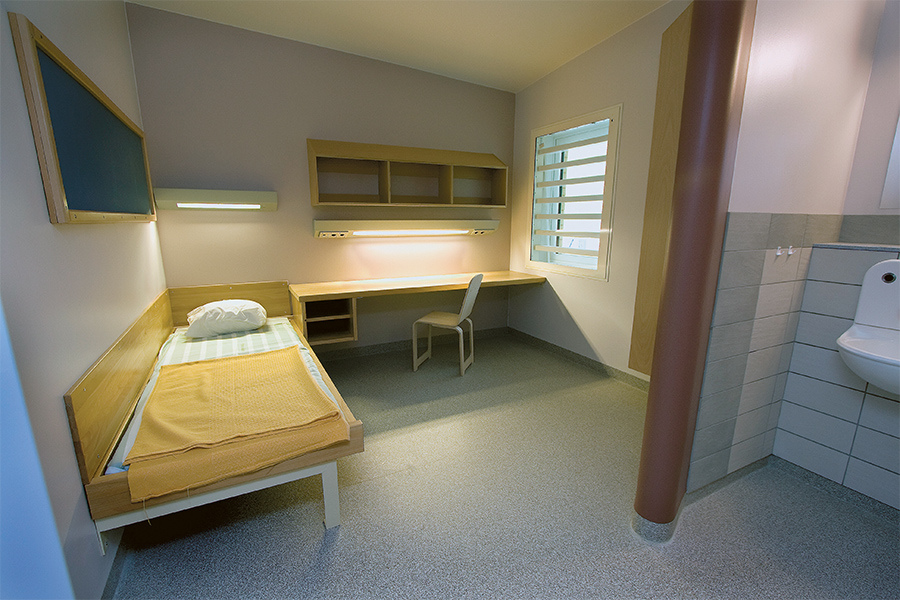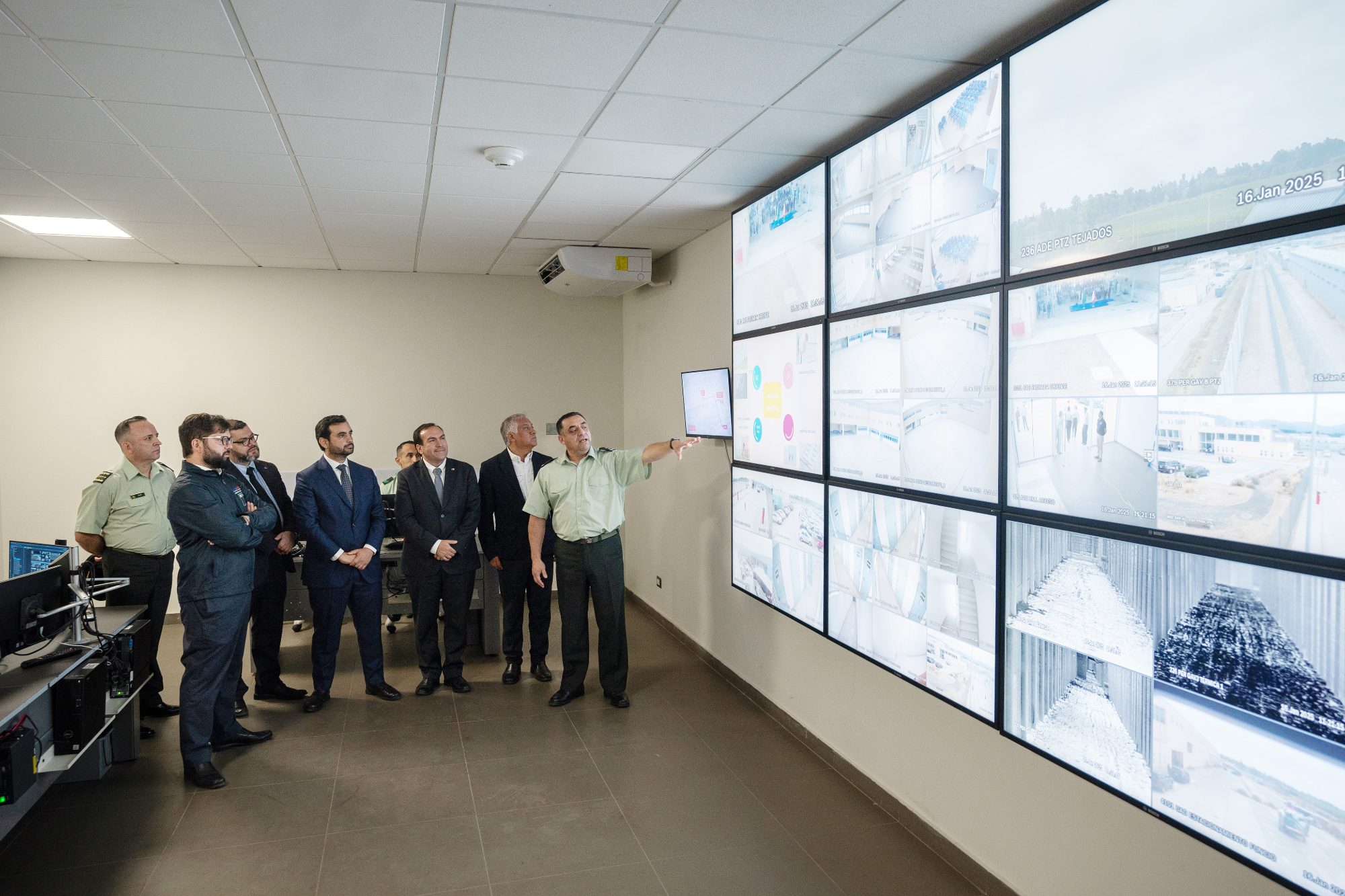Interview
Martin Holmgren
Director-General, Swedish Prison and Probation Service
“Our vision is that spending time in the prison and probation system will bring about change, not simply provide secure custody. In this interview, we talk about offender rehabilitation in the Swedish Prison and Probation Service. DG Holmgren has led the agency for two years and shares the challenges and opportunities in the face of prison overcrowding, digitalisation, and the pandemic. A particular highlight is the importance of correctional staff training and development and the organisation’s practical approach to the topic.
How does the Swedish correctional system support offenders in the direction of successful reintegration?
MH: We aim to run a humane and effective prison and probation service with a strong focus on rehabilitation.
To this end, we investigate each individual’s risks, needs, and responsivity and make a comprehensive plan for their time within the service.
We have been using the RNR model throughout the SPPS since 2013. We base our entire system of investigations and interventions on this model, in both prison and probation.
The SPPS research and evaluation department, which operates with external oversight, analysed the implementation of this model, and found that it provided acceptable levels of prediction and treatment effect.
The different tools and interventions used in prisons and probation are subject to continuous evaluation, as is the system as a whole.
Since inmates are subject to conditional release after two-thirds of the prison sentence, probation activities and monitoring in society are also included in the plan.
Clients within our probation service are both controlled and supported to minimise risks of reoffending. We offer evidence-based treatment programmes, education, vocational training and other structured activities.
A secure environment for staff and inmates is also crucial; change can only come about when everyone feels safe. Our overall goal is to reduce recidivism and make significant contributions towards a safer and more secure society.

JT: The Swedish prison system has one of the best ratios of inmates per prison staff member in the EU (0.9), compared to the European average (1.7). Source: SPACE I, 2020.
What can you tell us about the profile of prison and probation officers? And, what importance does your agency attach to the training and development of correctional staff?
MH: We do have a high staff-inmate ratio compared to many other countries. We also have relatively few security incidents and a recidivism rate of around 30% within three years after release. A well-staffed service and good staff-inmate relations are an important part of this.
From our point of view, one of the most important factors for a successful prison and probation service is well-educated staff members with good attitudes and a solid commitment to their work.
We highly prioritise the recruitment, training and retention of correctional staff. The SPPS is growing rapidly; we need to recruit many new coworkers in the years to come and ensure a safe work environment. This is challenging due to fierce competition in the Swedish labour market.
We are working with recruitment campaigns, including a special tour bus that travels across the country with an exhibition about the prison and probation settings. This initiative is a good way to meet potential employees and start a conversation.
To become a prison officer, you need to have passed high school. As a probation officer, you need a university degree. As a staff member within the Swedish Prison and Probation Service, you need to believe in every individual’s ability to make positive changes in their life.
You also need to enjoy working with people in a security-based and structured environment.
We offer employees extensive internal training focused on practical skills and security and understanding factors behind criminal behaviour.
For professionals already part of the SPPS, we provide off- and onsite training for all practical aspects of work. We also run an e-training curriculum to maintain staff competence levels, and we provide further training for the implementation of new tools and methods.
Staff working directly with clients in non-management positions can do so in different roles, creating vertical and horizontal mobility opportunities.
Such a change in function normally requires further training.
JT: In recent years, the prison population in Sweden has increased. In the last 4-5 years, it has increased by more than 1000 individuals. Source: SPACE I, 2015-2020 Reports
How has the Swedish Prison and Probation Service dealt with this evolution, and what challenges does it entail?
MH: The increase of the prison population has coincided with political trends moving towards generally increased levels of incarceration.
Combined, this has created considerable challenges for us, trying to maintain the level of quality in our work under mounting pressure.
The number of inmates started to increase at the end of 2016 and has since risen sharply. We are currently suffering from overcrowding in both remand centres and prisons.
Overcrowding led us to place two inmates in one-person cells. An occupancy rate that exceeds 100% puts a lot of pressure on our staff and inmates.
Today, operational and security situations remain stable yet challenged.
As regards the future, our statistical forecasts and overall assessment indicate that this situation will continue for several years. Therefore, we are expanding current facilities across the country and plan to build several new prisons soon.

We have learned a lot during the pandemic. When forced to go digital, we found new ways of doing things.
What were the main challenges and opportunities that the pandemic crisis posed to your organisation? And to what extent will any changes you implemented remain in the future?
MH: The COVID-19 pandemic has been a major challenge for prison systems worldwide. A virus spreading within prisons, especially in a situation with overcrowding, is alarming.
Our initial strategy was to form a crisis management team of experts from multiple departments within the SPPS: security, HR, logistics, legal, inmate placements and communications. The purpose was to lead and coordinate measures and facilitate swift decision making.
Temporary cancellation of visits and furlough and switching to digital probation meetings were some of the measures taken.
We have learned a lot during the pandemic. When forced to go digital, we found new ways of doing things. One example is that we provided tablets for video calls between inmates and their children.
We offer access to tablets to all inmates with minor children, provided they pass a security approval. Staff supervise all the calls. Inmates appreciated this measure very much, and it will remain in the future. The prevalence of digital meetings has increased significantly within the agency, which has been a welcome development.
Visits and phone calls with lawyers have not been limited during the pandemic; inmates are always able to contact their lawyers.
We offer the possibility of digital court hearings, where the inmate participates on a screen from inside the remand prison. But digital court hearings were possible before the pandemic as well.
The use of virtual reality (VR) technology in treatment is a new and promising field. It enables limitless scenarios and situations for training purposes. Right now, we are trialling VR techniques for treatment programming.

What is the state of play regarding the use of technologies in your service (both from an operational point of view and possibly in the context of monitoring offenders and supporting their rehabilitation process)?
MH: Security measures and requirements can be an obstacle for digitalisation within prison and probation settings, which is a challenge.
The SPPS has an integrated system for client information administration (an offender management system). This system enables cohesive planning and execution of individual treatment plans throughout all stages of contact with the SPPS, in remand centres, prisons, and within the probation service. This management platform also integrates the electronic monitoring of clients.
The use of virtual reality (VR) technology in treatment is a new and promising field. It enables limitless scenarios and situations for training purposes. Right now, we are trialling VR techniques for treatment programming. We are running two studies focusing on VR in treating violent offenders, partly in collaboration with the Växsjö Clinic for Forensic Medicine. We will also conduct a study on the use of VR in staff training.
Technical and digital solutions will definitely play an increasingly important role in the future of the Swedish Prison and Probation Service. This is an area of improvement, as we need to keep up with digitalisation in society.
Martin Holmgren
Director-General, Swedish Prison and Probation Service
Martin Holmgren has been Director-General of the Swedish Prison and Probation Service (SPPS) since March 2020. He led the Swedish National Courts Administration between 2014 and 2020. Before that, Mr Holmgren was the Director-General for administrative and legal affairs at the Swedish Ministry of Internal Affairs. He had previously served as a judge and chief justice in Stockholm and Nacka district courts.


